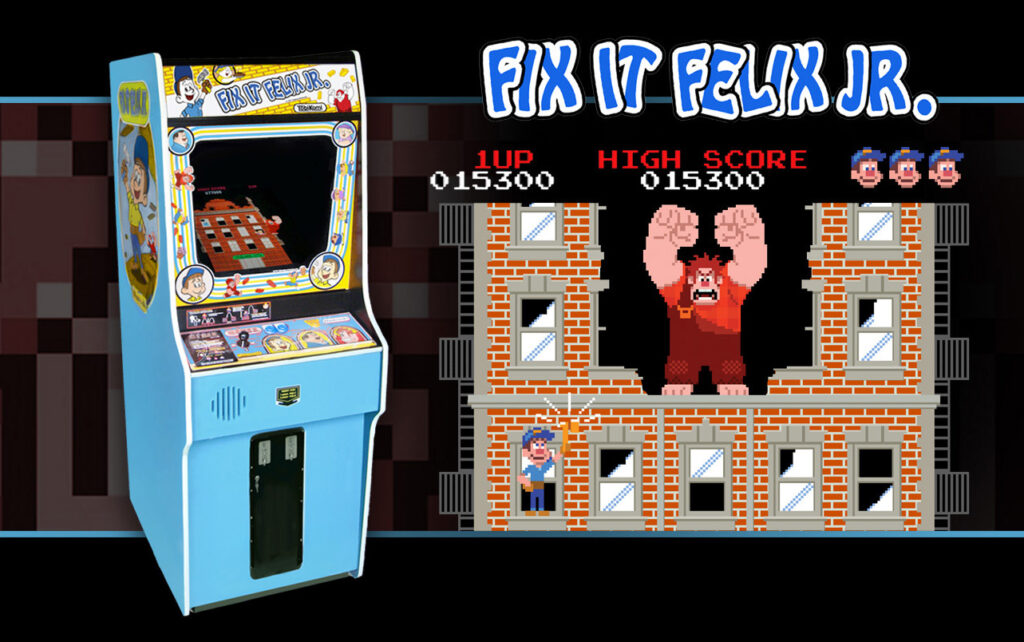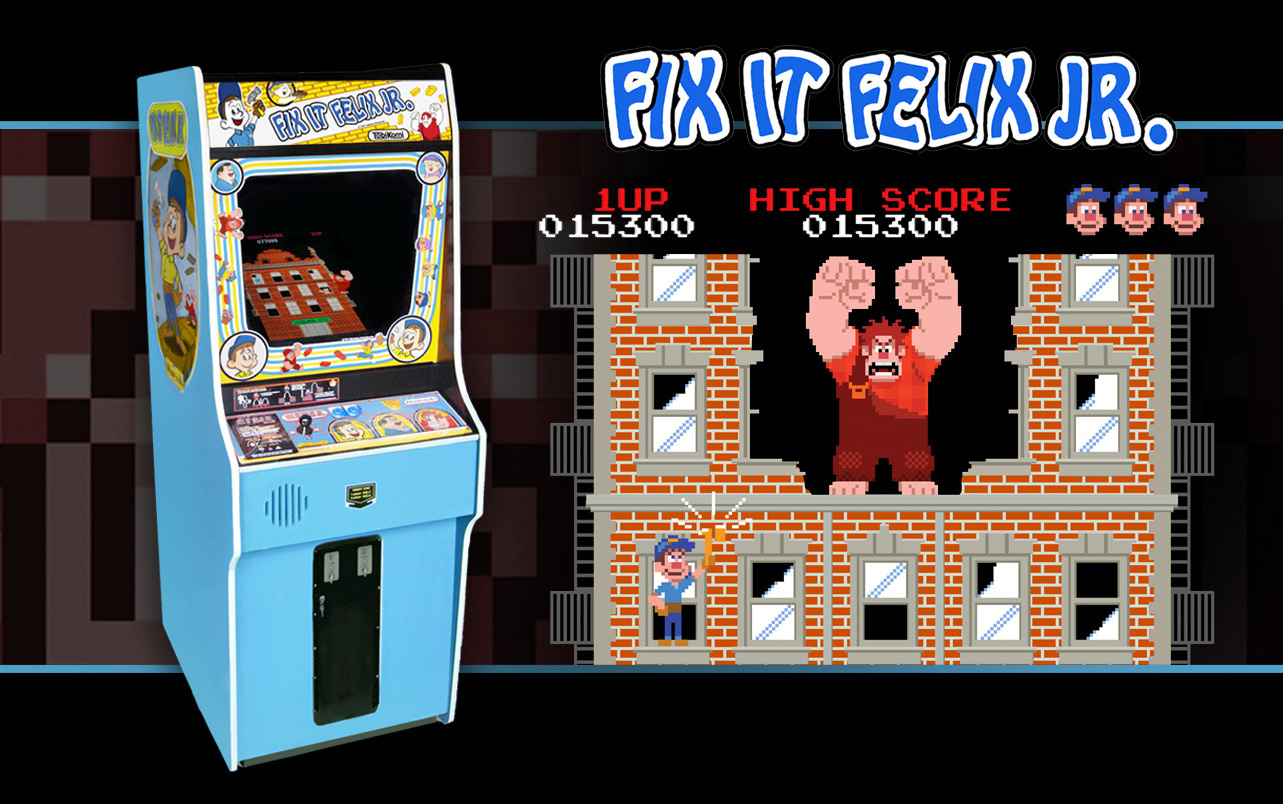
Exploring the World of Arcade Games in Wreck-It Ralph: A Deep Dive
Wreck-It Ralph, the beloved Disney animated film, isn’t just a heartwarming story about a video game villain trying to prove he can be a hero. It’s also a vibrant celebration of arcade games, their history, and the community that surrounds them. The film cleverly incorporates both fictional and real arcade games, creating a rich and immersive world that resonates with gamers of all ages. This article delves into the specific arcade games featured in the movie, explores their significance, and examines how they contribute to the overall narrative and appeal of Wreck-It Ralph.
The Fictional Arcade Games: A World of Imagination
The heart of Wreck-It Ralph lies within its fictional arcade games, each meticulously designed to reflect different eras and genres. These invented games not only serve as the backdrop for the story but also provide crucial context for the characters and their motivations.
Fix-It Felix Jr.: A Classic 8-Bit Adventure
Fix-It Felix Jr. is the game where Ralph, the titular character, resides. It’s a classic 8-bit arcade game reminiscent of Donkey Kong, where the player controls Felix, a handyman tasked with repairing the damage caused by Ralph’s destructive rampages. The simple gameplay, pixelated graphics, and repetitive nature of Fix-It Felix Jr. highlight Ralph’s frustration and desire for something more fulfilling. The game’s popularity within the arcade community, despite Ralph’s role as the villain, underscores the complex relationship between good and evil.
Sugar Rush: A Candy-Coated Racing World
Sugar Rush is another prominent fictional arcade game in Wreck-It Ralph. This vibrant kart racing game is set in a world made entirely of candy, complete with lollipop trees, chocolate rivers, and gummy bear spectators. Sugar Rush is home to Vanellope von Schweetz, a glitchy racer who dreams of competing but is ostracized due to her condition. The game’s colorful aesthetic and fast-paced gameplay offer a stark contrast to the more traditional Fix-It Felix Jr., showcasing the diversity of arcade games and their appeal to different audiences. The glitches in the game and Vanellope’s character are metaphors for imperfections and the beauty found within them. The game embodies the idea of embracing uniqueness and finding strength in differences.
Real Arcade Games: A Nostalgic Nod to Gaming History
Beyond the fictional creations, Wreck-It Ralph is populated with cameos from iconic real-world arcade games. These appearances serve as nostalgic nods to gaming history and add a layer of authenticity to the film’s portrayal of the arcade scene.
Pac-Man: The Yellow Icon
Pac-Man, the iconic yellow character who devours pellets and avoids ghosts, makes a memorable appearance in Wreck-It Ralph. He and the ghosts reside in Game Central Station, the central hub that connects all the arcade games. Pac-Man’s inclusion is a testament to his enduring popularity and his status as a symbol of the golden age of arcade games. It emphasizes the community and shared experience that arcade games created.
Q*bert: The Hopping Hero
Q*bert, the orange character who hops across a pyramid of cubes, is another recognizable face in Wreck-It Ralph. He, along with other displaced arcade game characters, resides in Game Central Station after his game is unplugged. Q*bert’s presence highlights the challenges faced by older arcade games as newer, more technologically advanced titles emerge. He represents the perseverance and resilience of classic gaming icons.
Street Fighter II: The Fighting Game Phenomenon
Characters from Street Fighter II, such as Ryu, Ken, and Zangief, also appear in Wreck-It Ralph. They are seen participating in the Bad-Anon support group, a gathering for video game villains seeking redemption. The inclusion of Street Fighter characters demonstrates the broad appeal of arcade games and their influence on popular culture. They add another layer to the narrative by showcasing the complexity of characters and their internal struggles.
Other Notable Cameos
Numerous other classic arcade games make cameo appearances, including Frogger, Donkey Kong, Sonic the Hedgehog, and Space Invaders. These cameos contribute to the film’s overall atmosphere of nostalgia and its celebration of gaming history. The sheer number of references showcases the filmmakers’ deep understanding and appreciation of the arcade culture. These appearances help to create a world that feels both familiar and fantastical to viewers.
The Significance of Arcade Games in Wreck-It Ralph
The presence of arcade games in Wreck-It Ralph is not merely a decorative element. It’s integral to the film’s themes of identity, friendship, and acceptance. The arcade serves as a microcosm of society, where characters from different backgrounds and with different abilities come together to create a community. The film explores the challenges faced by those who feel like outsiders and the importance of finding belonging. Ralph’s journey from villain to hero is a testament to the power of redemption and the potential for change.
Community and Connection
The arcade in Wreck-It Ralph is a place where characters can connect with one another, regardless of their roles in their respective games. This sense of community is particularly important for Ralph, who initially feels isolated and misunderstood. Through his interactions with other characters, such as Vanellope and Felix, Ralph learns the value of friendship and the importance of accepting others for who they are. The arcade becomes a safe space where characters can be themselves and find support.
Nostalgia and Appreciation
Wreck-It Ralph taps into the nostalgia associated with the golden age of arcade games. The film’s visual style, sound effects, and character designs evoke a sense of familiarity and warmth for viewers who grew up playing these games. By celebrating the history of arcade games, Wreck-It Ralph encourages viewers to appreciate the contributions of the pioneers who shaped the gaming industry. The film acts as a time capsule, preserving the memories and emotions associated with these classic games.
The Enduring Appeal of Arcade Games
Despite the rise of home consoles and online gaming, arcade games continue to hold a special place in the hearts of many gamers. The communal experience of playing alongside others, the tactile feel of the controls, and the simple yet addictive gameplay are all factors that contribute to their enduring appeal. Wreck-It Ralph captures this essence perfectly, reminding viewers of the joy and excitement of spending time in an arcade. The film highlights the unique social dynamic that arcade games foster, where people can come together to compete, collaborate, and share their passion for gaming.
Conclusion: A Love Letter to Arcade Games
Wreck-It Ralph is more than just a children’s movie; it’s a love letter to arcade games and the culture that surrounds them. By seamlessly blending fictional and real arcade games, the film creates a rich and immersive world that resonates with gamers of all ages. The story’s themes of identity, friendship, and acceptance are further enhanced by the presence of these iconic games, making Wreck-It Ralph a truly unforgettable cinematic experience. The film’s success lies in its ability to capture the spirit of arcade games and to celebrate the community that has grown around them. The movie serves as a reminder of the power of gaming to bring people together and to create lasting memories. The careful incorporation of arcade games elevates the narrative and solidifies Wreck-It Ralph’s place as a modern classic. The film is a testament to the enduring legacy of arcade games and their continued relevance in the world of entertainment. The movie successfully blends nostalgia with contemporary themes, making it appealing to both older and younger audiences. The attention to detail in recreating the look and feel of arcade games is truly remarkable. Ultimately, Wreck-It Ralph is a celebration of creativity, innovation, and the enduring power of play.
[See also: History of Arcade Games]
[See also: The Future of Gaming]
[See also: Disney Animation Studios]

